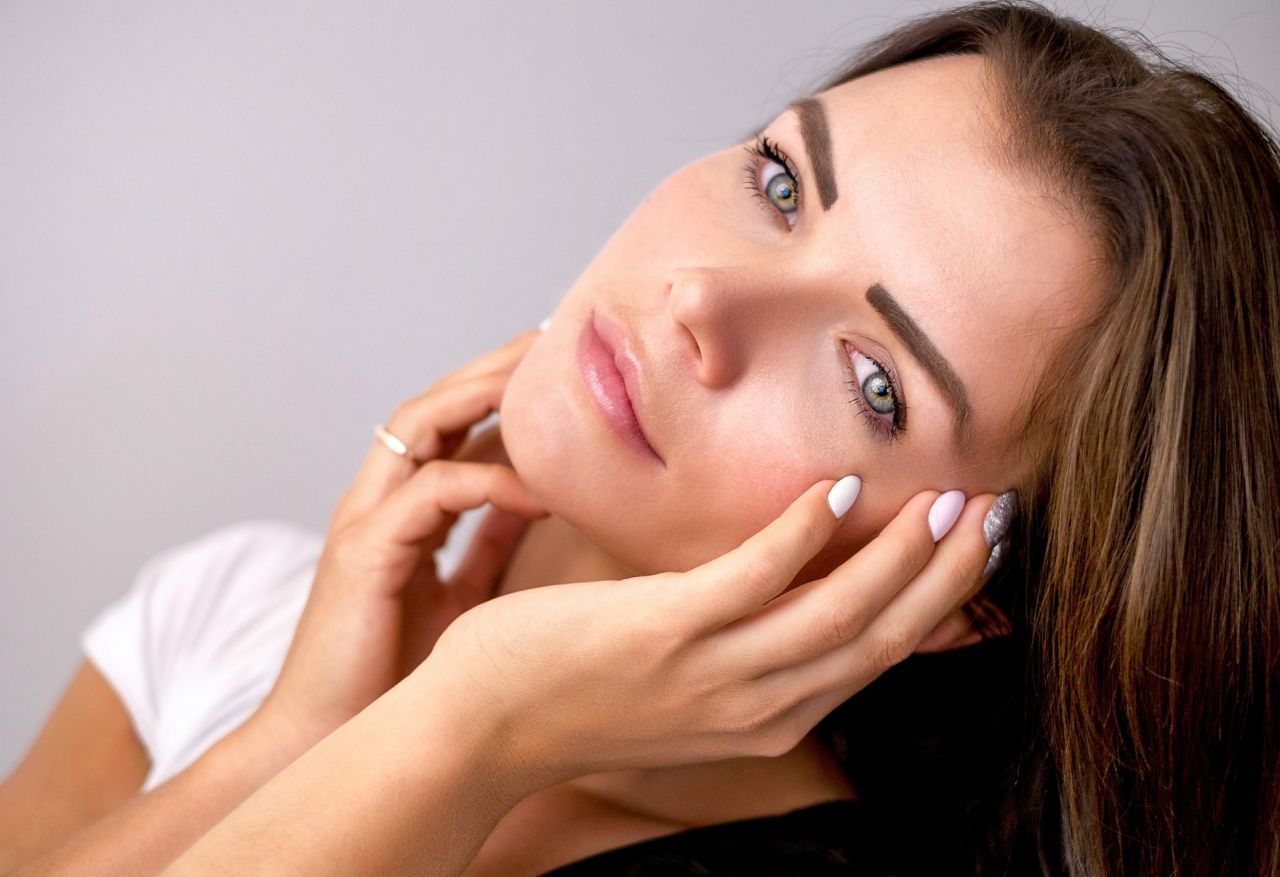Laser skin tightening has become an increasingly popular, non-invasive solution to address sagging, aging skin and restore a youthful look.
Using advanced laser technology, this treatment works by heating collagen under the skin’s surface, stimulating collagen production, and thereby tightening the skin.
Target areas for laser skin tightening include the face, neck, stomach, chest, and thighs. Here’s a detailed look at how laser skin tightening works, the different types of treatments available, and what you can expect from this innovative procedure.
Let’s get straight to the point
Laser skin tightening is a noninvasive method for reducing signs of aging, such as sagging skin, fine lines, and wrinkles, by stimulating collagen production through targeted heat application.
This treatment, suitable for areas like the face, neck, and stomach, provides a range of laser options—Fraxel, Titan, and Nlite—each with unique benefits depending on skin type and desired results. Sessions are quick, with minimal discomfort and downtime, making it a convenient alternative to surgical facelifts.
Though costs vary by laser type and treatment area, laser skin tightening offers long-term, natural-looking improvements that can last up to two years with proper maintenance.
What is Skin Tightening?

Skin tightening encompasses a range of treatments and technologies aimed at firming and tightening loose skin.
These treatments use heat, radiofrequency, or light to stimulate collagen production in the skin, making it appear firmer and younger.
Our skin loses elasticity as we age due to decreased collagen and elastin production, leading to sagging skin, fine lines, and wrinkles.
Why Does Skin Get Loose?
Skin laxity or looseness is primarily a result of aging. Several factors contribute to this, including:
- Age: The body naturally reduces its collagen and elastin production with time.
- Genetics: Hereditary factors influence skin elasticity and collagen production levels.
- Environmental Damage: Prolonged exposure to UV radiation, pollution, and smoke can degrade collagen and elastin.
- Lifestyle Choices: Diet, hydration, and habits like smoking can impact the skin’s resilience and regenerative abilities.
These factors gradually break down the skin’s structure, causing it to thin and sag over time.
Understanding Laser Skin Tightening
Laser skin tightening uses a specialised laser to heat the collagen beneath the skin’s surface. This process triggers a contraction of collagen fibres, tightening the skin instantly while encouraging new collagen growth.
This non-surgical, minimally invasive treatment requires no anesthesia, and patients can quickly return to their daily routines. However, repeated treatments may be necessary to achieve the best results.
Benefits of Laser Skin Tightening
Laser skin tightening provides several advantages, including:
- Non-Invasive Procedure: Unlike facelifts, laser treatments involve no incisions or lengthy recovery periods.
- Minimal Discomfort: Topical anesthetics and cooling systems make the procedure virtually painless.
- Quick Sessions: Treatments typically last 30-60 minutes.
- Versatility: It is effective for various areas, including the face, neck, abdomen, and thighs.
What to Expect During a Laser Skin Tightening Session
- Preparation: The skin is cleansed to remove makeup, oils, or creams. A topical anesthetic may be applied to enhance comfort.
- Procedure: The laser device emits controlled light onto the skin, heating the collagen and stimulating its contraction.
- Cooling Mechanism: Most laser systems have cooling devices that help manage skin temperature, keeping patients comfortable.
- Post-Treatment Care: Patients might experience minor redness or swelling, which typically subsides within hours.
This procedure is generally safe and requires minimal downtime. Patients can resume daily activities shortly after their session.
Common Laser Skin Tightening Treatments
1. Fraxel Laser
- Purpose: Treats aging signs such as fine lines, wrinkles, acne scars, and uneven skin texture.
- Types:
- Fraxel Refine: Prevents early signs of aging.
- Fraxel Restore: Repairs damaged skin.
- Fraxel Repair: Tightens loose skin for a youthful look.
- Benefits: Non-ablative with minimal pain and recovery time.
- Side Effects: Minor redness or swelling, typically subsiding quickly.
2. Titan Laser
- Purpose: Tightens skin on the face, neck, and body.
- How It Works: Uses infrared light to heat collagen beneath the skin, encouraging collagen growth and skin contraction.
- Benefits: Non-invasive, suitable for patients who want an anti-aging solution without surgery.
- Side Effects: Minor swelling or redness, fading within hours.
- Cost: Approximately 300-750 per session, depending on the area size.
3. Nlite Laser
- Purpose: Addresses wrinkles, fine lines, and scarring.
- How It Works: Yellow light stimulates collagen production, smoothing wrinkles and scars.
- Benefits: Quick recovery with no redness or swelling immediately following treatment.
- Side Effects: Rare but may include temporary redness or mild discolouration.
- Cost: Ranges from 900 to 1500, depending on treatment area size.
Is Laser Skin Tightening Painful?

Laser skin tightening is usually comfortable, with minimal to no pain. Most treatments involve a topical anesthetic and cooling mechanism, which helps prevent discomfort during the procedure.
Some patients report a warm or tingling sensation akin to the light snap of a rubber band on the skin, which subsides soon after treatment. Post-treatment, slight warmth may be in the treated area for up to 48 hours.
Side Effects and Risks
While laser skin tightening is generally safe, patients should be aware of potential side effects, which may include:
- Redness: Temporary redness or swelling in the treated area.
- Heat Sensitivity: Slight sensitivity to heat in the hours following the treatment.
- Rare Complications: In rare cases, burns or mild discolouration can occur.
Choosing an experienced dermatologist who can tailor the treatment to your skin type is essential to minimise risks.
Choosing the Best Laser Treatment for Your Skin Type
Selecting the best laser for skin tightening depends on individual skin type, treatment area, and desired results. Here’s a quick summary:
- Fraxel: Best for fine lines, sun damage, and acne scars.
- Titan: Effective for tightening loose skin on the face and neck.
- Nlite: Ideal for reducing wrinkles and acne scars with minimal downtime.
Conclusion
Laser skin tightening is a powerful, non-invasive treatment to address sagging skin and achieve a youthful appearance. This method stimulates natural collagen production by heating collagen beneath the skin, reducing fine lines, wrinkles, and skin laxity.
With multiple laser types available—Fraxel, Titan, and Nlite—there’s an option suited for almost every skin type and desired outcome.
For individuals seeking a convenient and effective anti-aging treatment, laser skin tightening offers a reliable alternative to surgical facelifts, providing long-lasting results with minimal downtime.
By understanding the options, side effects, and costs associated with laser skin tightening, you can make an informed choice and work with a skilled dermatologist to create a treatment plan tailored to your skincare goals.
FAQs About Laser Skin Tightening
IPL. When it comes to the best laser skin tightening treatment, Thermage and IPL are both excellent options that can provide for firmer, younger looking skin with little to no side effects and zero recovery time.
The heat can cause your body to produce more collagen. With 1 treatment, most people see modest lifting and tightening within 2 to 6 months. You may get more benefit from having additional treatments.
New skin usually covers the area in one or two weeks and full recovery takes at least a month. During this time do not use products that may irritate your face, such as cosmetics. And avoid situations that increase your risk of infection, such as public whirlpools.
In general, non-surgical skin tightening procedures work by using targeted energy to heat deeper layers of skin, which stimulates collagen and elastin production and gradually improves skin tone and texture. Some treatments also affect fibrous tissue to help smooth cellulite.
Even if you don't see immediate improvement, your initial results will continue to improve throughout the year. On average, most patients get to enjoy silky-smooth skin that lasts for anywhere between three and five years after undergoing laser therapy.

